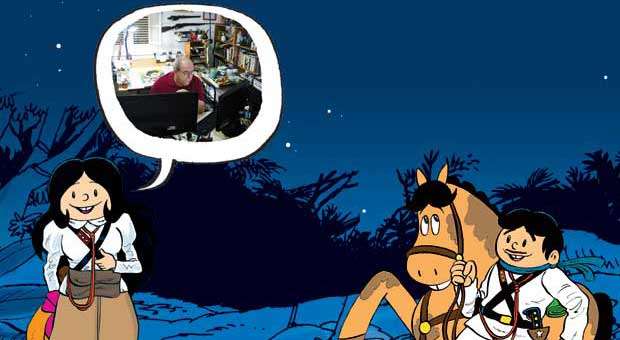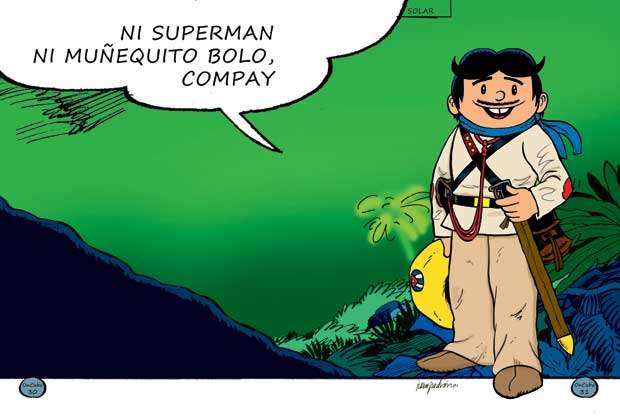For Cubans in the 20-50 age group, the Elpidio Valdés character is absolutely natural, a cheeky password for identity. Elderly Cubans have memories of “American” cartoons and those of us who were born in the euphoric 1960s and are now in our fifties went from Soviet cartoons to the mass fiesta and the charm of Juan Padrón’s animated “Elpidio” films.
Many of us have sung along with Carlos Varela at some point: “I don’t have Superman, I have Elpidio Valdés/ and my television was Russian.” In “Memories,” the trova singer evokes the essence of a rich history that was implanted into the national soul after decades of two powerful influences. The U.S. presence in the economy, and also its impact on the country’s sentimental education, lasted from 1902 to 1958. The Soviet influence was equally significant, especially after Cuba joined the Comecon in 1972. According to their sympathies or ideological stance, ordinary folks called the northerners “yankis,” “yumas” or “yonis” (from “Johnnys”), and they referred to the others, who were from even farther away, as “sovieticos” or “rusos”—and with that Cuban gift for definitions that go beyond rhetoric—“bolos.”
Padrón initially created the figure of Colonel Elpidio as a secondary character in a comic strip series about a
Cuban samurai for the magazine Pionero. In the late 1970s that Elpidio Valdés was adapted for film, the decade when the country’s cultural life was awash in political discourse.
One of the essential merits of these cartoons was how they depicted the heroic events of the wars of independence against Spain with characters that were human, sensual and believable. Elpidio, his girlfriend María Silvia, and even his affectionate horse, Palmiche, fight with weapons but above all with ingenuity; they apply the fresh wit and propensity for noble mischievousness of a nation that was forming its identity. Padrón joins in the creation of national values and to a certain extent embraces the cult epic, but he does so by prioritizing the personal and the intimate.
A special mention should go to the melting pot of accents used, from Elpidio’s fascinating sing-song of Cuba’s eastern region to the Castilian variation used by the Spanish characters. His adversary, Resóplez, talks like a Galician, or gallego—the word used in Cuba to refer to Spaniards in general—a familiar character in Cuban popular theater. And also on the side of the colonial troops, the sympathetic nature of Andalusians comes through.
This cartoon series’ highlights include the richness of its drawings and the energy of its soundtrack, ranging from the theme song by Silvio Rodríguez to the spot-on use of Cuban pop music. And among the droll voices that give life to these legendary beings, actor Frank González’s especially stands out. Despite a solid career in radio and television, Frank is remembered most of all as “the voice of Elpidio Valdés.”
Juan Padrón’s work is a real fiesta of customs and a recreation of the landscape in that intimate, sweetly over-confident manner that we Cubans have in relating to visitors and compatriots. The Cuba that we see through the heroic but familiar eyes of Elpidio Valdés is defended by people who are white, black, and mixed-race. The strategies they use as they fight for their independence are based on a soldier’s courage, the effectiveness of his unusual solutions for confronting danger, and a sharp sense of humor that deactivates any superflous solemnity.











